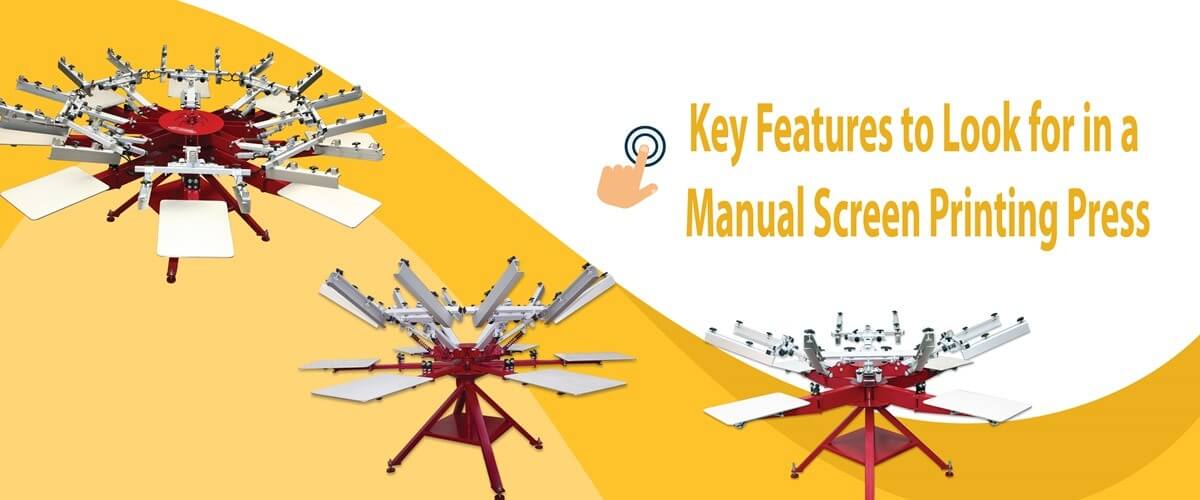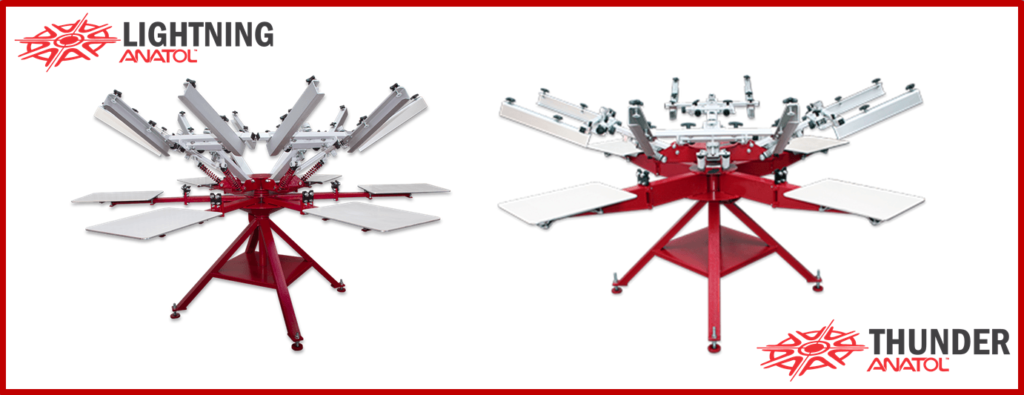

Revolucionando la industria de la serigrafía a través de tecnología de punta y servicio de calidad
Anatol Equipment Manufacturing Co.
1429 S Shields Dr
Waukegan, IL 60085


Revolucionando la industria de la serigrafía a través de tecnología de punta y servicio de calidad
Anatol Equipment Manufacturing Co.
1429 S Shields Dr
Waukegan, IL 60085

What’s the best way to get started on your search for the right manual machine? Answering a few important questions will help you determine your basic needs, then digging a little deeper into key press features will narrow down your options further.
The first step towards finding the right manual press for your screen printing shop is determining what you really need to meet your current needs…and to meet the growth you anticipate in the future. Answering the following three questions will get you off to a good start and help direct you toward the correct press while saving time:

Anatol’s Lightning and Thunder manual screen printing presses
are built tough, comfortable to operate and packed with features.
Once you’ve narrowed your choices down to machines that meet your basic requirements, get the most bang for your buck by comparing their features. Some key features to look for include:
*It’s an advantage to choose a press from a manufacturer whose pallets can also be used on their automatic machines. Also, make sure they supply a variety of different pallet sizes (youth, leg, etc.)
Your initial investment in a press will definitely be a concern, but remember there are additional costs to consider, like crating, delivery, and you’ll likely need a forklift. While these are exciting times, calmly and carefully evaluate your needs and look for a press that will fit your budget and your requirements. Many manufacturers of quality screen printing equipment welcome visitors, or can provide you with a shop you can visit to see equipment in person. Take advantage of these opportunities or at least talk to an owner of the press that interests you most. Considering the points listed above and doing some careful research will help point you towards the perfect manual press.
For more information on choosing and using a manual screen printing press, check out these blogs:
Getting Started with Your First Manual Screen Printing Press
How to Get the Most from Your Manual Press (Even in an Automatic Shop)
Your message was successfully sent!